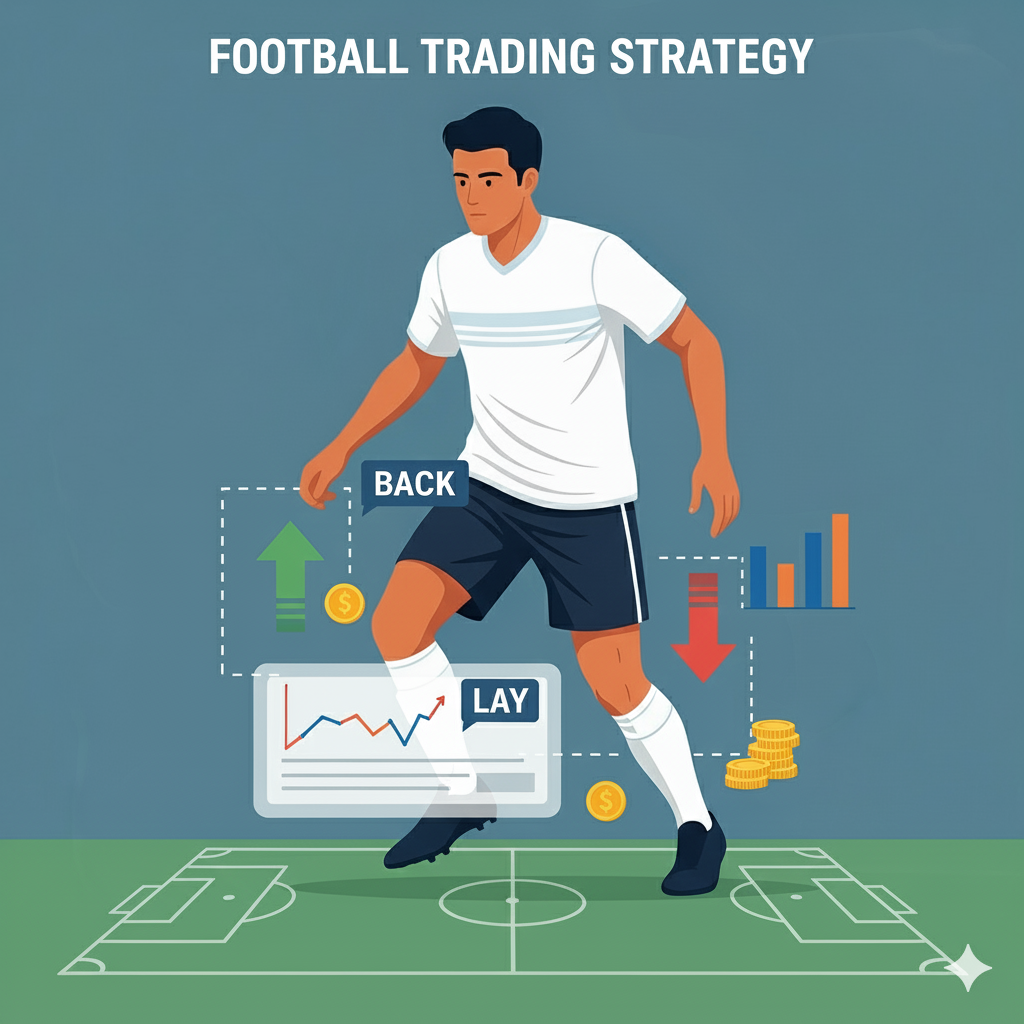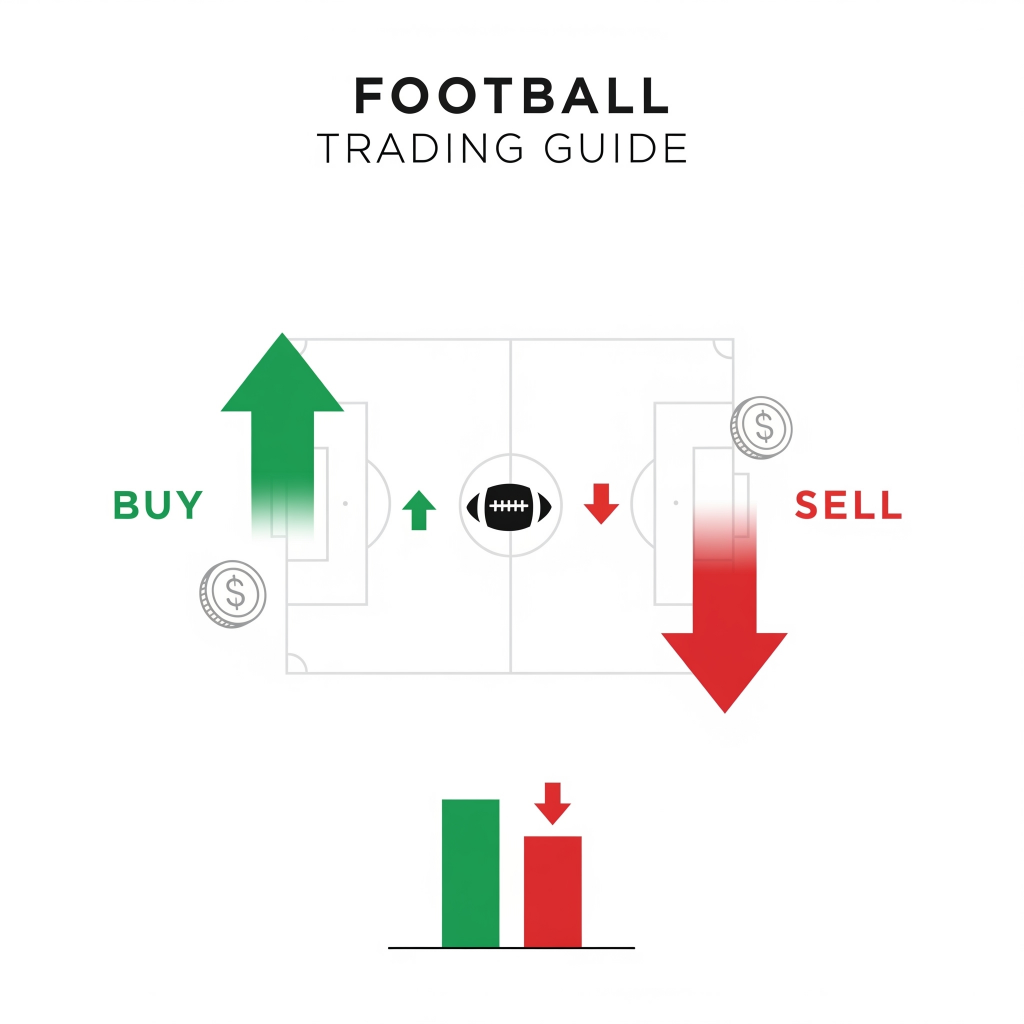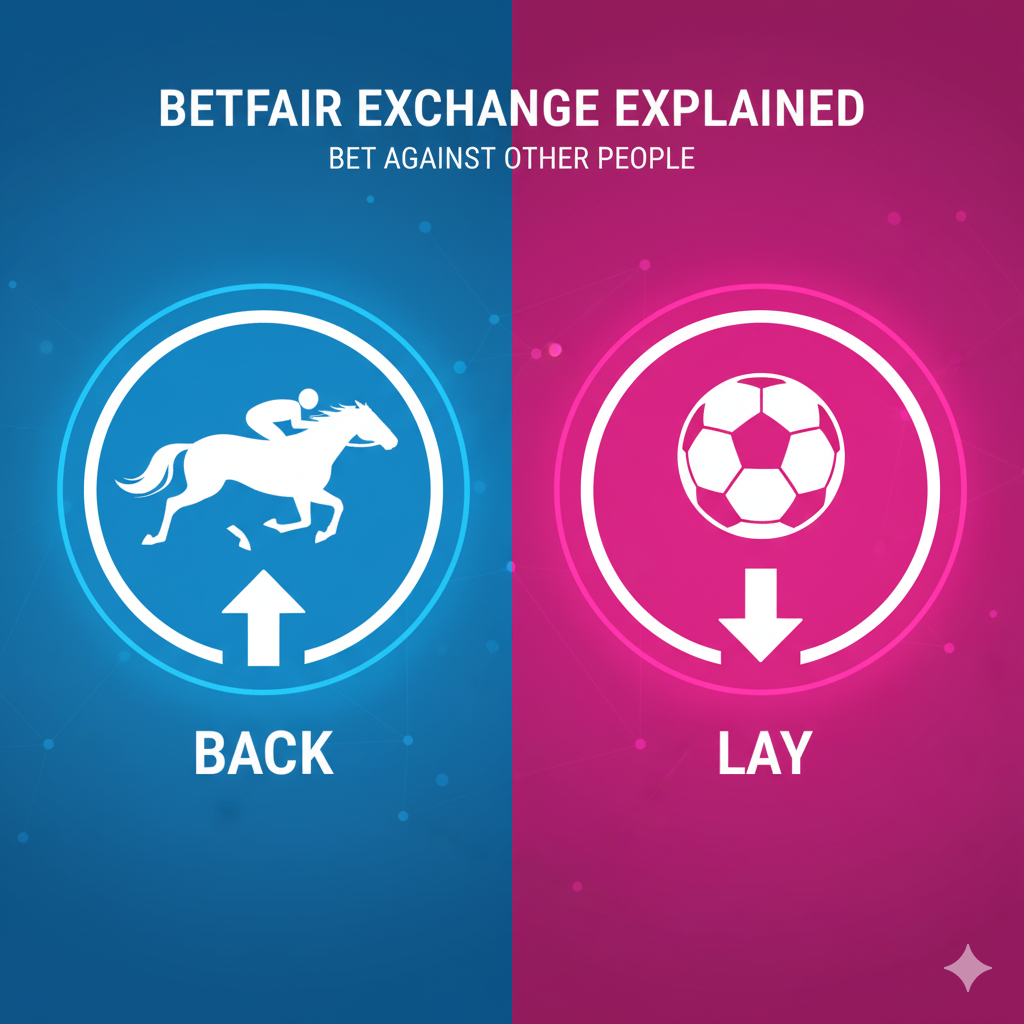The world of in-play football trading on exchanges like Betfair offers a dynamic and exciting way to engage with the sport, moving beyond traditional fixed-odds betting. Among the most popular and versatile strategies is “Back the Under/Over Goals.” This approach allows traders to profit from the fluctuating odds around the total number of goals scored in a match, whether they anticipate a goal-fest or a tight, low-scoring affair. It’s a strategy that, when applied with discipline and proper analysis, can yield consistent returns.
This comprehensive guide will break down the “Back the Under/Over Goals” strategy, detailing its core principles, outlining crucial selection criteria, and providing a step-by-step methodology for successful implementation. We’ll explore essential tools, delve into risk management, and equip you with the knowledge to make informed trading decisions on platforms like Betfair.

Understanding “Back the Under/Over Goals”
The “Under/Over Goals” market is one of the most liquid and actively traded markets in football. It allows you to bet on whether the total number of goals in a match will be under or over a specific line, most commonly 2.5 goals.
- Under 2.5 Goals: You win if 0, 1, or 2 goals are scored in the entire match. You lose if 3 or more goals are scored.
- Over 2.5 Goals: You win if 3 or more goals are scored in the entire match. You lose if 0, 1, or 2 goals are scored.
The core of the under/over goals strategy, when used for trading, is to “back” (bet for) one of these outcomes and then, as the game progresses and circumstances change (goals are scored, time passes), “lay” (bet against) that same outcome at different odds to lock in a profit or minimize a loss.
How Odds Fluctuate in Under/Over Markets:
The odds in these markets are highly sensitive to two main factors:
- Time Decay: As time passes in a match without a goal being scored, the probability of reaching a higher goal total (e.g., Over 2.5 goals) decreases. Conversely, the probability of staying under a lower goal total (e.g., Under 2.5 goals) increases. This causes the “Over” odds to rise and the “Under” odds to fall.
- Goals Scored:
- If a goal is scored, the odds for “Over X.5 goals” will decrease significantly, and the odds for “Under X.5 goals” will increase significantly.
- For example, if you back “Under 2.5 goals” at 1.90, and a goal is scored, the odds for “Under 2.5 goals” might jump to 3.00 or higher, as there are now fewer goals remaining to stay under that line. This creates your profit opportunity to lay the Under 2.5 goals at the higher price.
Key Trading Principles:
- Back Under then Lay Under: This is a common approach. You back “Under 2.5 goals” (or another line like 1.5 or 3.5) early in the match. If no goal is scored for a period (e.g., 10-20 minutes), the odds for “Under” will drop due to time decay, allowing you to lay it at a lower price for a profit. If a goal is scored, the “Under” odds will rise, allowing you to lay it at a higher price to green up across all outcomes, or to limit your loss.
- Back Over then Lay Over: You back “Over 2.5 goals” (or another line) early in a match you expect to be high-scoring. If a goal is scored, the odds for “Over” will drop, allowing you to lay it at a lower price for a profit. If no goal is scored for a period, the “Over” odds will rise due to time decay, indicating a potential exit for a small loss.

Step-by-Step Guide: Implementing Back the Under/Over Goals
Success with this strategy, like any other, hinges on meticulous planning, careful match selection, and disciplined execution.
Step 1: Match Selection Criteria (Pre-Match Analysis)
This is where you identify the optimal matches for either backing “Under” or backing “Over.”
A. Criteria for Backing “Under X.5 Goals”
This strategy seeks to profit from a lack of early goals and time decay, or from a single goal causing the “Under” odds to jump.
- Competition Type:
- Prioritize: Leagues known for being defensively strong or having tighter matches (e.g., Italian Serie A, some lower English leagues, certain international tournament group stages).
- Avoid: High-scoring leagues (e.g., Dutch Eredivisie, German Bundesliga) unless specific team matchups suggest otherwise.
- Link to Football Stats: WhoScored: https://www.whoscored.com and FBref: https://fbref.com/en/ offer detailed league overviews and average goals per game.
- Team Strength & Form:
- Strong Defenses: Look for at least one team with a very strong defensive record, conceding few goals, especially at home.
- Weak Attacks: Conversely, look for teams (particularly the away team) that struggle to score, have low shots on target, or poor conversion rates.
- Low Scoring History: Check recent form and head-to-head records for games that typically feature fewer goals. Avoid teams consistently involved in 3+ goal thrillers.
- Team Stats Link: WhoScored: https://www.whoscored.com and Soccerway: https://uk.soccerway.com/ are excellent for comprehensive team and player statistics, including goals scored/conceded, clean sheets, and attacking/defensive ratings.
- Key Player Absences: If key attacking players are injured or suspended for one or both teams, it could significantly reduce goal-scoring potential.
- Injury/Suspension News: Check team news from reputable sports news outlets like BBC Sport Football: https://www.bbc.co.uk/sport/football or Sky Sports Football: https://www.skysports.com/football.
- Odds for “Under X.5 Goals”:
- Ideal Range (for Under 2.5): Typically between 1.80 and 2.20 at kick-off. You want reasonable odds that allow for profit if time decay occurs, or if a goal is scored.
- Consider other lines: If you expect an extremely tight game, you might back “Under 1.5 goals.” If you anticipate 2 goals but not 3+, then Under 2.5 is ideal.
B. Criteria for Backing “Over X.5 Goals”
This strategy aims to capitalize on early goals and the subsequent drop in “Over” odds.
- Competition Type:
- Prioritize: High-scoring leagues (e.g., German Bundesliga, Dutch Eredivisie, some Scandinavian leagues, and even Premier League matches involving attacking teams).
- Avoid: Leagues known for defensive football.
- Link to Football Stats: As above, WhoScored: https://www.whoscored.com and FBref: https://fbref.com/en/ for league goal averages.
- Team Strength & Form:
- Attacking Teams: Look for two teams that are strong in attack, create many chances, and have a high goal-scoring record.
- Weak Defenses: At least one team (ideally both) should have a vulnerable defense, conceding goals regularly.
- High Scoring History: Check recent form and head-to-head records for games that consistently feature 3+ goals.
- Team Stats Link: WhoScored: https://www.whoscored.com and Soccerway: https://uk.soccerway.com/ for detailed attacking/defensive metrics.
- Key Player Presence: Ensure key attacking players are fit and starting.
- Injury/Suspension News: BBC Sport Football: https://www.bbc.co.uk/sport/football or Sky Sports Football: https://www.skysports.com/football.
- Odds for “Over X.5 Goals”:
- Ideal Range (for Over 2.5): Typically between 1.70 and 2.10 at kick-off. You want to get reasonable value on the “Over” market.
- Consider other lines: If an absolute goal-fest is expected (e.g., two top attacking teams with weak defenses), you might consider “Over 3.5 goals.”
C. Minimum Trading Volume (Liquidity) on Betfair (Crucial for Both)
Regardless of whether you’re backing Under or Over, market liquidity is paramount.
- Essential for Execution: High liquidity ensures your back and lay bets are matched instantly, allowing you to enter and exit trades at desired prices without “slippage.”
- Recommended Volume: For major football matches in top leagues, aim for at least £50,000 to £100,000+ already matched in the “Over/Under X.5 Goals” market (or the “Match Odds” market, as liquidity often correlates) within the first 10-15 minutes of the match. For smaller matches, a few thousand pounds might be workable for very small stakes, but always be wary of increased risk.
- Where to check: On the Betfair Exchange website, the “Matched” volume is displayed directly above the odds grid for each market.
Step 2: In-Play Execution & Exit Strategies
Once your carefully selected match kicks off, your trading software becomes your best friend for rapid execution.
Monitor Live: Absolutely essential
Watch the match live via a TV broadcast or a fast, reliable live stream (some exchanges or dedicated sports services offer these). Slow data feeds will invariably lead to losses as market prices move faster than your information.
Entry Point
- Back Under: Place your “Back Under X.5 Goals” bet within the first 5-10 minutes, assuming no early goals. The odds will be at their lowest point for the “Under” at this time.
- Back Over: Place your “Back Over X.5 Goals” bet within the first 5-10 minutes.
Stake Size
Always start with small stakes until you have a proven track record with the strategy. Risk management is paramount.
Exit Strategy (Greening Up/Hedging)
- For “Back Under X.5 Goals”:
- Ideal Scenario (No Goal): If no goal is scored for a set period (e.g., 10-20 minutes), the “Under” odds will drop due to time decay. You then Lay Under X.5 Goals at the lower price, locking in a profit across all outcomes.
- Goal Scored: If a goal is scored (e.g., 1-0 after backing Under 2.5), the “Under 2.5” odds will rise significantly. You then Lay Under X.5 Goals at this new, higher price. This will usually result in a smaller profit (or break-even) across all outcomes, or at least a minimal loss compared to letting the trade run to 3+ goals. The goal is to avoid the full loss.
- For “Back Over X.5 Goals”:
- Ideal Scenario (Goal Scored): If a goal is scored (e.g., 1-0 after backing Over 2.5), the “Over 2.5” odds will drop significantly. You then Lay Over X.5 Goals at the lower price, locking in a profit across all outcomes.
- No Goal Scored: If no goal is scored for a set period (e.g., 15-20 minutes), the “Over” odds will rise due to time decay. You would then Lay Over X.5 Goals to exit for a small, controlled loss. The longer it remains 0-0, the larger your potential loss if you don’t exit.
Stop-Loss Points
Crucially, define your stop-loss before entering the trade.
- For “Back Under X.5 Goals”: If the score reaches a certain point (e.g., 2 goals after you backed Under 2.5), or if a second goal is scored too early, you might need to lay the Under market for a loss to prevent a full loss if a third goal comes.
- For “Back Over X.5 Goals”: If no goal is scored by a certain time (e.g., 20-30 minutes), or if the game becomes unexpectedly tight, exit for a small loss. Don’t wait for a goal that might never come.
Step 3: Advanced Considerations and Risk Management
- Multiple Goal Lines: Don’t just stick to 2.5 goals. If you expect a very low-scoring game, consider “Under 1.5 goals.” If you expect many goals, “Over 3.5 goals” might offer better value.
- Red Cards: A red card drastically impacts goal-scoring potential.
- If the attacking team (for “Over” strategies) gets a red card, their chances decrease.
- If the defensive team (for “Under” strategies) gets a red card, their vulnerability increases.
- Adjust your exit strategy accordingly – often it means exiting for a loss or reduced profit.
- Player Substitutions: Introducing a key attacking player or removing a defensive one can change the game’s dynamic. Stay alert.
- Game State: A team that is 1-0 up might sit back and defend, slowing the game down. A team that is 0-2 down might go all out attack, creating more goals. Your strategy should adapt to these real-time changes.
- Pitch Conditions: Heavy rain or a poor pitch can make scoring difficult, favoring “Under” trades.
- Discipline is Paramount: Stick to your pre-defined plan. Do not let emotions dictate your trading decisions.

Recommended Trading Bots and Sport Exchanges
For serious “Back the Under/Over Goals” trading, especially in-play, specialized software is indispensable. The speed and features these tools provide are crucial for profitable execution.
Betting Exchanges (where you place your trades):
- Betfair Exchange:https://www.betfair.com
- Why: The largest and most liquid betting exchange globally, offering the best prices and market depth for football. Most professional traders use Betfair.
- Location: Based in the UK, but operates internationally (always check local gambling laws).
- Smarkets:https://smarkets.com
- Why: A strong competitor with lower commission rates and a user-friendly platform. Good liquidity, making it a viable alternative or complementary exchange.
- Location: Based in the UK, available in various countries.
- Matchbook:https://www.matchbook.com
- Why: Known for its tight spreads and competitive commission. Good liquidity for major sports.
- Location: Based in Ireland, serving numerous international markets.
Trading Bots / Software (to connect to the exchanges for advanced features and automation):
These applications connect directly to the exchange’s API, offering faster order placement, ladder interfaces, advanced charting, and automation capabilities. These are the perfect tools for the under/over goals strategy.
- Bet Angel:https://www.betangel.com
- Features: Industry-leading professional software. Provides advanced charting, a “ladder” interface for lightning-fast one-click betting, and sophisticated automation tools for programming complex strategies (e.g., automated greening up, stop losses, entry triggers).
- Compatibility: Primarily Windows.
- Geeks Toy:https://www.geekstoy.com
- Features: Highly popular among traders for its speed, reliability, and customizable interface. Offers excellent ladder view and charting, making it ideal for rapid in-play decisions.
- Compatibility: Primarily Windows.
- BF Bot Manager:https://www.bfbotmanager.com
- Features: Specifically designed for automation. Allows users to create and run custom betting “bots” with detailed rules (e.g., back Over 2.5 at kick-off, lay it if a goal is scored within 10 minutes, exit for X% loss if no goal by 20 minutes). Perfect for hands-off trading of predefined strategies.
- Compatibility: Primarily Windows.
Common Pitfalls to Avoid
- Emotional Decisions: Reacting to goals or lack thereof with fear or greed rather than sticking to your plan.
- Poor Match Selection: Trading matches that don’t fit your criteria (e.g., backing “Under” in a high-scoring league, or “Over” in a defensive grind).
- Insufficient Liquidity: Trying to trade in markets with low matched volume, leading to unmatched bets and missed opportunities or losses.
- Slow Data: Using a delayed live feed will consistently put you behind the market, making it impossible to get good prices.
- Ignoring Form/News: Failing to consider recent team form, injuries, or tactical changes.
- Over-Staking: Betting more than you can afford to lose. Risk management is the bedrock of profitable trading.
- Holding Too Long: Particularly with “Back Over” strategies when no goals are scored, holding onto a losing position for too long will lead to larger losses due to time decay.
- Betting on Arbitrary Lines: Always have a reason for choosing “Under 1.5,” “2.5,” or “3.5” based on your analysis.
Conclusion: The Dynamic Edge of Under/Over Goals Trading
The “Back the Under/Over Goals” strategy is a powerful and flexible tool in the arsenal of a football trader. It leverages the predictable movements of odds based on both time decay and the most impactful event in a football match: a goal. By combining meticulous pre-match research into team statistics, form, and league tendencies with the rapid execution capabilities of advanced trading software, you can systematically identify and exploit trading opportunities.
Success in this market, as with all sports trading, is a marathon, not a sprint. It demands continuous learning, strict adherence to your chosen criteria, and an unwavering commitment to disciplined risk management. Armed with the insights from this guide and the right tools, you can confidently navigate the exciting, volatile world of football trading and work towards consistent profitability on Betfair and other exchanges.

Betfair Bot Reviews: Which One Suits You Best?
Which Automated Betfair bot Trading Software is Right For You? Choosing the best Betfair bot in 2025 can be a…

The Ultimate Betfair Trading Guide: History, Strategies
Betfair trading is the secret that professional gamblers don’t want you to know. For decades, the game was rigged. You…

Backtesting Guides
Backtesting Guide — Principles & MarketBook Replay | BotBlog Backtesting guides Published: 2025-11-11 • BotBlog Backtesting Guide — Principles &…

Lesson 7 — Risk management & deployment
Skip to content Lesson 7 — Risk management, hedging & deployment Final crypto lesson: implement hedging/green‑up, enforce risk limits and…

Lesson 6 — Backtesting & simulation (Jupyter)
Skip to content Lesson 6 — Backtesting & simulation (Jupyter) Simulate strategies in Jupyter: load historical ticks/candles, replay data, simulate…

Lesson 5 — Webhooks & Pine alerts
Skip to content Lesson 5 — Webhooks & Pine alerts Build a secure webhook receiver for TradingView Pine alerts, validate…

Lesson 4 — Order placement & fills (testnet)
Skip to content Lesson 4 — Order placement & fills (testnet) Place limit and market orders on exchange testnets, handle…
